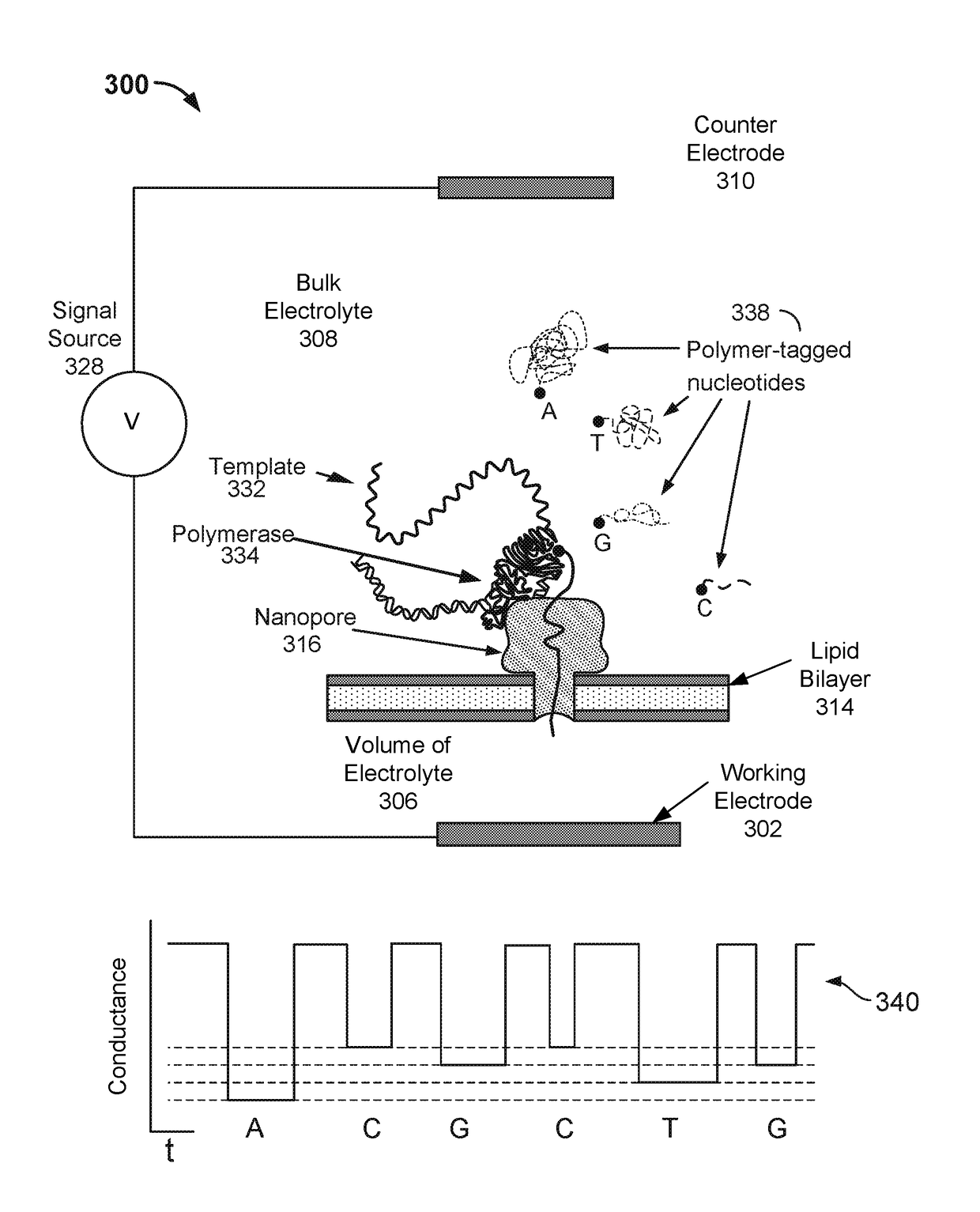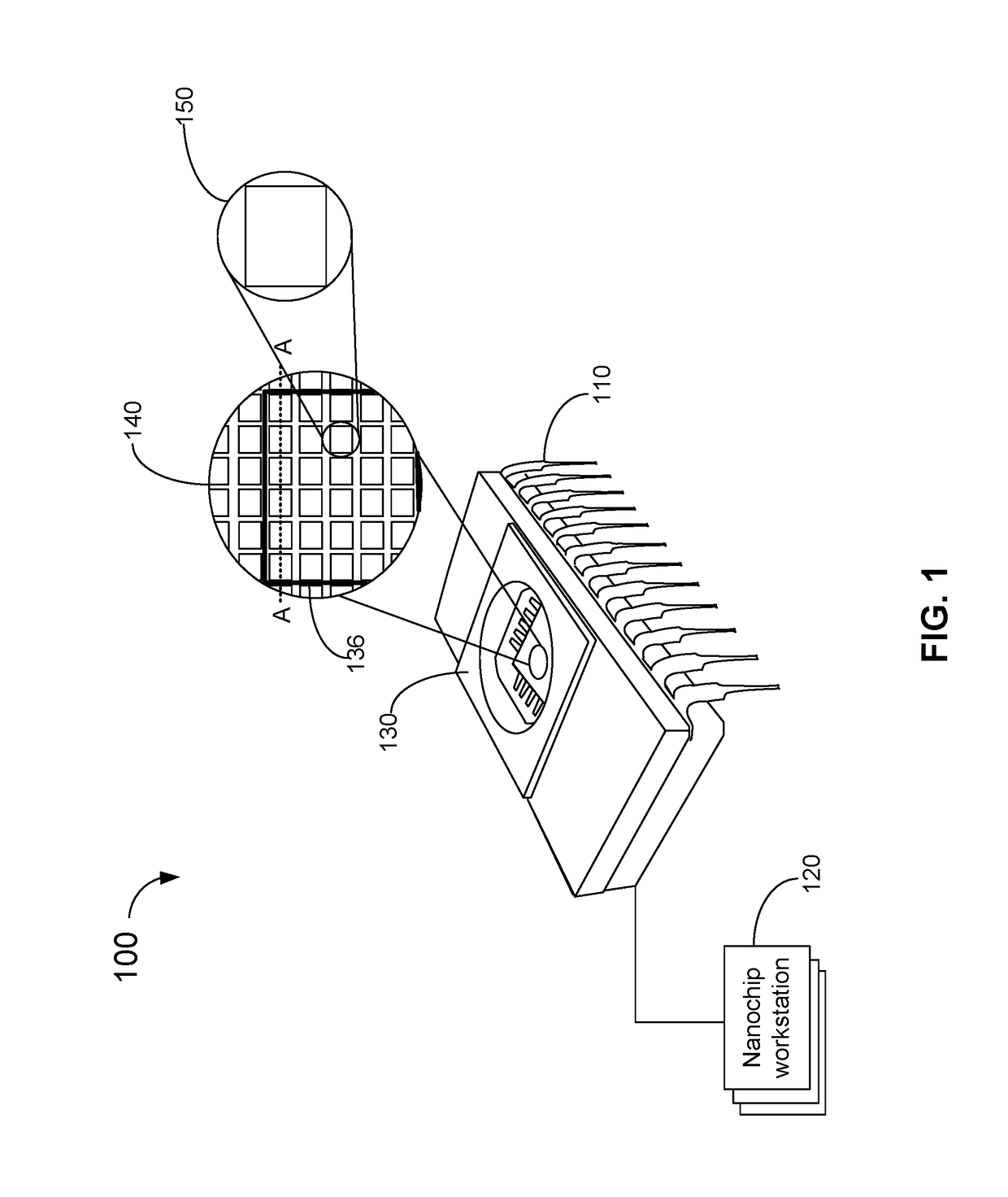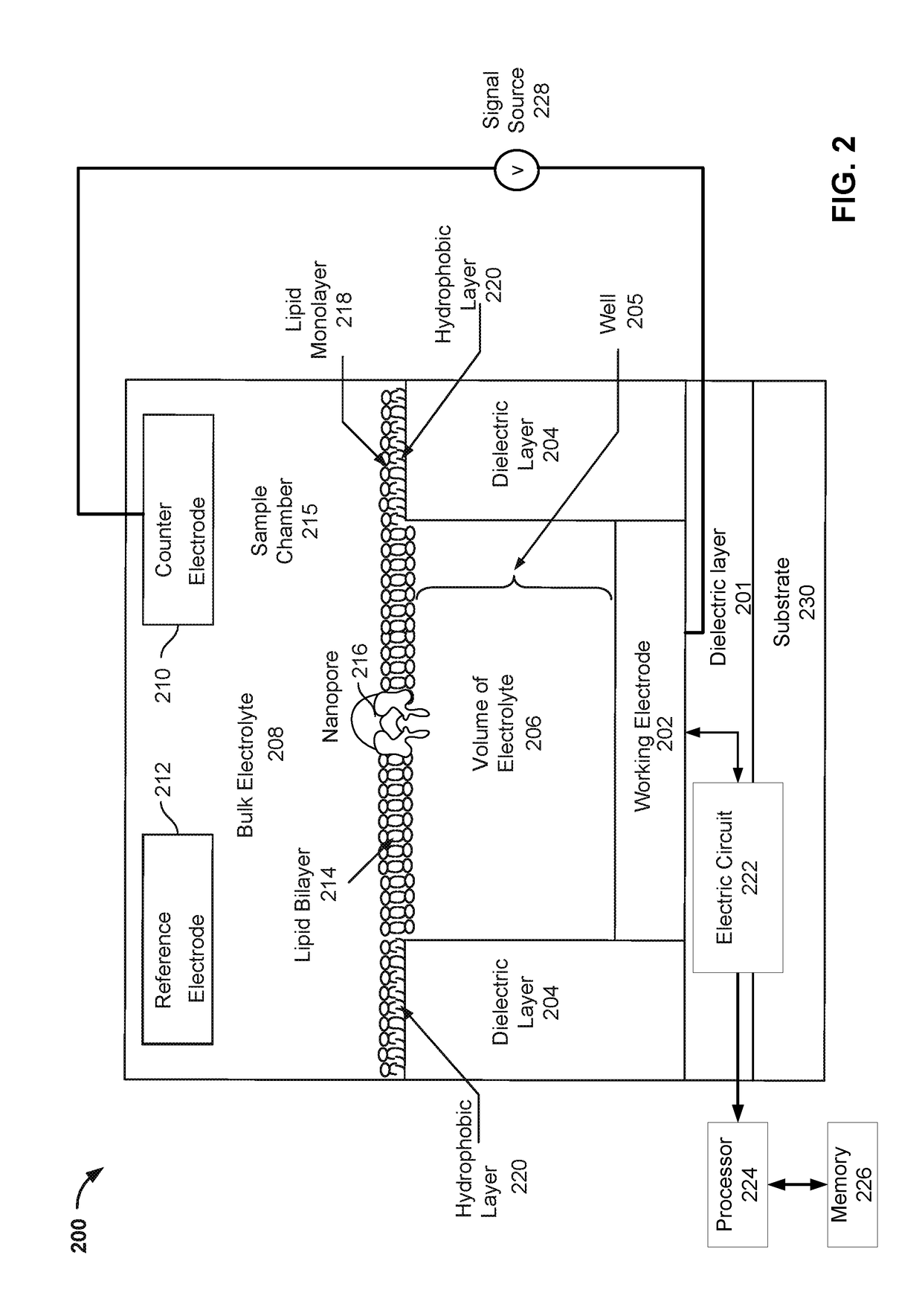Formation and calibration of nanopore sequencing cells
a nanopore and sequencing cell technology, applied in the field of nanopore sequencing cell formation and calibration, can solve problems such as difficulty in determining the correct molecule, and achieve the effect of improving the ability to detect base molecules
- Summary
- Abstract
- Description
- Claims
- Application Information
AI Technical Summary
Benefits of technology
Problems solved by technology
Method used
Image
Examples
Embodiment Construction
[0043]According to certain embodiments, techniques and systems disclosed herein relate to cell-by-cell determinations of the number of pores that perforate a lipid bi-layer within each cell, to cell-by-cell calibration techniques, and to sequencing signal normalization methods that can be applied on a cell-by-cell basis to the output signals of individual cells of a multi-cell nanopore-based sequencing chip.
[0044]In various embodiments, a data sampling and conversion circuit associated with nanopore cells in a column can sequentially sample and convert output voltage signals from each nanopore cell in the column, as part of identifying a tag (e.g., attached to a nucleotide) and consequently a nucleotide being incorporated into a nucleic acid. The stability and accuracy of the output voltage signal from each nanopore cell is of critical importance to the chip's overall ability to accurately and quickly sequence a DNA molecule under investigation. A number of issues can affect the sta...
PUM
| Property | Measurement | Unit |
|---|---|---|
| Time | aaaaa | aaaaa |
| Electric charge | aaaaa | aaaaa |
| Current | aaaaa | aaaaa |
Abstract
Description
Claims
Application Information
 Login to View More
Login to View More - R&D
- Intellectual Property
- Life Sciences
- Materials
- Tech Scout
- Unparalleled Data Quality
- Higher Quality Content
- 60% Fewer Hallucinations
Browse by: Latest US Patents, China's latest patents, Technical Efficacy Thesaurus, Application Domain, Technology Topic, Popular Technical Reports.
© 2025 PatSnap. All rights reserved.Legal|Privacy policy|Modern Slavery Act Transparency Statement|Sitemap|About US| Contact US: help@patsnap.com



